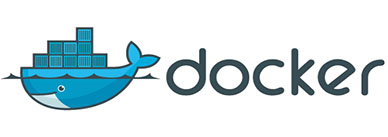How To Install Docker on Debian 12

In this tutorial, we will show you how to install Docker on Debian 12. For those of you who didn’t know, Docker is a powerful containerization platform, that revolutionizes the way software is developed, deployed, and managed. With its ability to isolate applications and their dependencies, Docker offers enhanced portability, scalability, and efficiency. Embrace the power of Docker, explore its vast ecosystem, and unlock new possibilities for your projects.
This article assumes you have at least basic knowledge of Linux, know how to use the shell, and most importantly, you host your site on your own VPS. The installation is quite simple and assumes you are running in the root account, if not you may need to add ‘sudo‘ to the commands to get root privileges. I will show you the step-by-step installation of the Docker database on a Debian 12 (Bookworm).
Prerequisites
- A server running one of the following operating systems: Debian 12 (Bookworm).
- It’s recommended that you use a fresh OS install to prevent any potential issues.
- SSH access to the server (or just open Terminal if you’re on a desktop).
- An active internet connection. You’ll need an internet connection to download the necessary packages and dependencies for Docker.
- A
non-root sudo useror access to theroot user. We recommend acting as anon-root sudo user, however, as you can harm your system if you’re not careful when acting as the root.
Install Docker on Debian 12 Bookworm
Step 1. Update Your Debian system.
Before we install any software, it’s important to make sure your system is up to date by running the following apt commands in the terminal:
sudo apt update sudo apt install apt-transport-https lsb-release ca-certificates curl dirmngr gnupg
This command will refresh the repository, allowing you to install the latest versions of software packages.
Step 2. Installing Docker on Debian 12.
With the environment prepared, let’s move on to the installation process. Now we import the Docker repository’s GPG key:
curl -fsSL https://download.docker.com/linux/debian/gpg | sudo gpg --dearmor -o /usr/share/keyrings/docker-archive-keyring.gpg
Add the Docker repository to the package manager:
echo "deb [arch=amd64 signed-by=/usr/share/keyrings/docker-archive-keyring.gpg] https://download.docker.com/linux/debian bookworm stable" | sudo tee /etc/apt/sources.list.d/docker.list > /dev/null
Now that the repository is added and the signing key is imported, we can proceed with the installation of Docker. Execute the following command:
sudo apt update sudo apt install docker-ce docker-ce-cli containerd.io
After Docker installation, ensure that it has been successfully set up by running a check on the Docker version:
docker version
Step 3. Using Docker with Ease.
Now that Docker is successfully installed on Debian 12 Bookworm, let’s explore its usage through a series of practical examples.
- Pulling Docker Images:
To work with Docker, you’ll need to pull images from the Docker Hub repository. Use the following command to search and pull an image:
docker pull <image-name>
- Running Containers:
Running containers allows you to utilize Docker images to execute applications in isolated environments. Use the following command to start a container:
docker run <options> <image-name>
- Interacting with Containers:
Managing and interacting with running containers is crucial for effective Docker usage. Here are a few essential commands:
### Starting a container ### docker start <container-name/container-ID> ### Stopping a container ### docker stop <container-name/container-ID> ### Removing a container ### docker rm <container-name/container-ID>
Congratulations! You have successfully installed Docker. Thanks for using this tutorial for installing the latest version of Docker on Debian 12 Bookworm. For additional help or useful information, we recommend you check the official Docker website.